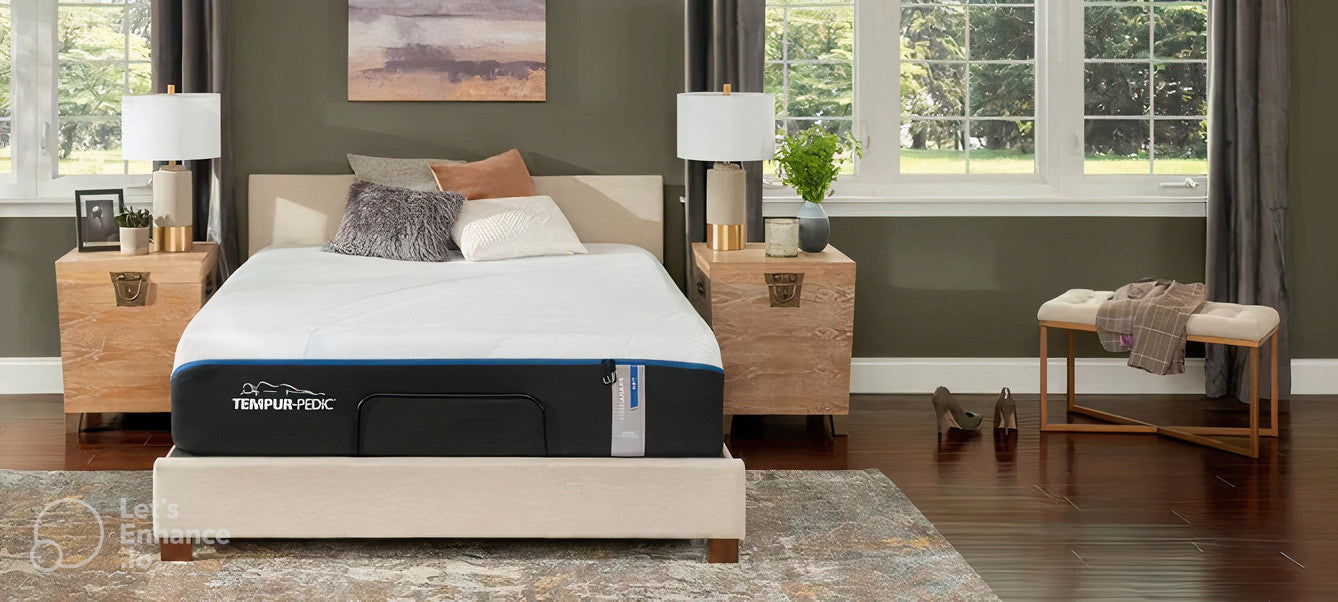
How To Choose A Mattress (Part 2)
Sleep Concerns
Besides picking out the right mattress type and firmness level, you should also take into account any specific needs you may have while you shop. Here are some common issues and what to look for with each:
Hot Sleepers
A cooling mattress can help you stay at a comfortable temperature throughout the night, especially if you overheat as you sleep. While many factors — like physical conditions and summer heat — can contribute to night sweats and a mattress won't make them magically disappear, the right bed can certainly help alleviate hot sleeping.
Just note that not all cooling materials are the same and memory foam tends to be the worst offender for trapping in heat. Here are common types of cooling features that you'll see when you shop:
- Built-in cooling technology: Embedded metal particles (like copper), gel and phase-change technology are often used in foam beds to draw heat away from the body. Metal and gel can help prevent overheating, but their cooling effects tend to be less noticeable in real use. Phase-change technology has the ability to store and release heat so it's your best for all-night temperature regulation.
- Cool-to-the-touch materials: Sometimes you'll notice cooling covers that have an instant chilling effect. These draw in heat immediately, but won't stay cool overnight.
- Breathable construction: Innersprings and some hybrids (with more coils than foam) will allow for more airflow than all-foam mattresses.
- Electric cooling: There are plug-in options that use water or air to cool the bed. These are ideal to keep your mattress continuously cool, though they're more high maintenance and have added components to incorporate, like a cooling unit next to your bed.
Back Pain
The best mattress for someone with back pain will have at least some foam for pressure relief and a medium firmness level for support and spine alignment. We've consulted doctors that specialize in back pain, who say that an underlying issue is likely causing the back pain, but the right mattress can be one step in alleviating discomfort. In fact, studies have shown that the right mattress can improve pain, stiffness and sleep quality up to 50-60%.
Organic Materials
For anyone that prefers an organic mattress made of natural materials, it's important to make sure the entire mattress follows strict organic standards and not just one component. Sometimes brands use an organic cover and call it an organic mattress, which can lead to greenwashing by making it seem more eco-friendly than it actually is. Memory foam can never be organic; instead look for latex or innerspring mattresses. Check to make sure the bed is certified organic by a trusted organization, including:
- Global Organic Textile Standard (GOTS): This provides a standard for fabrics (like cotton and wool) and ensure the entire manufacturing process follows strict requirements, as opposed to just the growing of the fiber. We often see the GOTS certification misused in bedding, but you can verify a specific brand in its public database.
- Global Organic Latex Standard (GOLS): It's similar to GOTS because it sets standards for the entire production process, but it's for the latex component.
Note that other certifications may be used for beds with green claims, like OEKO-TEX, GREENGUARD and CertiPUR-US. These let you know that the mattresses have been tested to ensure there are no unsafe levels of harmful chemicals, but they do not validate any organic or natural claims on their own.
Construction Features
Certain specifications about how the bed is made may not be top of mind when you shop, but factoring in these features can play a big role in how satisfied you are with your bed. Here's what to look for if any of these issues are important to you:
- Motion isolation: If you or your sleeping partner moves around overnight, a mattress that doesn't let you feel the movement is ideal to keep you both sleeping soundly. Foam beds cancel motion better than innersprings, and we've found that luxury foam beds in particular do the best job.
- Modular firmness: For sleeping partners with different preferences, a split bed with interchangeable firmness levels is a great option, especially if you prefer a traditional mattress over one that's adjustable. Plus, these beds are easy to take apart for moving and to replace your firmness level over time. Naturepedic and Bedgear both offer modular mattresses with great reviews in our tests.
- Edge support: A common complaint we hear from mattress owners is that their beds sink in at the sides. This can be uncomfortable if you sleep near the edge, but it's mostly an issue of making it difficult to sit on the side of your bed. Low-cost beds and all-foam mattresses that ship in a box typically have less edge support.
- Mattress height: A taller mattress that's 14 inches or higher often has more layers feels more luxurious to lie on. That being said, a shorter mattress (around 10 inches) may cost less and be easier to set up. A lower mattress also allows for less struggling to put on your fitted sheet.
Mattress Sizes
Check the mattress dimensions before you buy to ensure it'll properly fit into your room. Queen is the most popular mattress size, but King (which is equivalent to two Twins) is ideal for two sleepers if you have the space. Here are the typical dimensions for each mattress size:
|
Twin 38" x 80" |
Twin XL 38" x 75" |
Full 54" x 75" |
 Queen 60" x 80" |
King 76" x 80"
|
California King 72" x 84"
|
Please refer to some of our mattresses below:
https://lifestylefurniturehomestore.com/collections/mattresses







